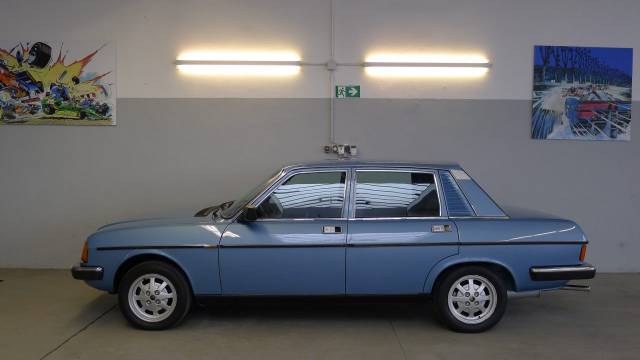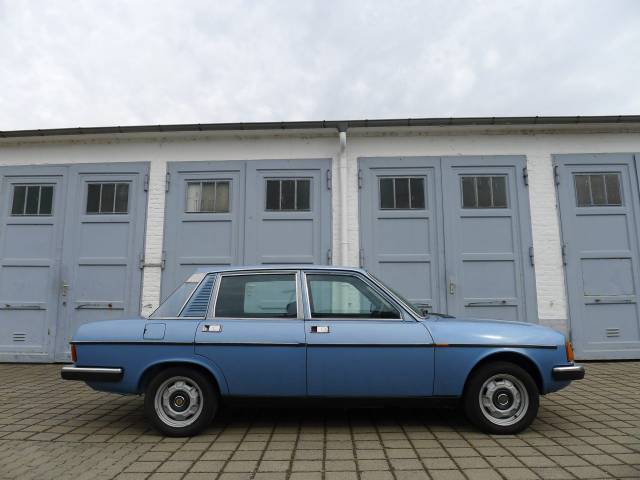Lancia Trevi classic cars for sale
The Lancia Trevi distinguishes itself with its transversely mounted twin-cam engines, front-wheel drive, and a unique approach to four-door saloon design from the early 1980s. Sophisticated suspension, practical fuel economy, and refined mechanical engineering make this classic an insider’s choice for enthusiasts who value Lancia’s unorthodox approach to technology and style.
Search results
Currently, there are no matching listings for your search.
Create search alert
Let yourself be notified as soon as a listing is published that matches your search filters.
Create listing
Do you have a Lancia Trevi that you want to sell? Then create a listing now.
Create listingLancia Trevi listing references from Classic Trader
Below you will find listings related to your search that are no longer available on Classic Trader. Use this information to gain insight into availability, value trends, and current pricing for a "Lancia Trevi" to make a more informed purchasing decision.

1982 | Lancia Trevi 2000 I.E.
Lancia Trevi 2000 carburatore 115 cv

1982 | Lancia Trevi 2000 I.E.

1982 | Lancia Trevi 2000 I.E.
Create search alert
Let yourself be notified as soon as a listing is published that matches your search filters.
Create listing
Do you have a Lancia Trevi that you want to sell? Then create a listing now.
Create listingHistory of the Lancia Trevi
Introduced in 1980, the Lancia Trevi was originally known as the Lancia Beta Trevi, building upon the technical foundation established by the Beta series. The car arrived at a time of significant development within Lancia, distinguishing itself as a mid-sized saloon with contemporary engineering and distinctive Italian design cues. Produced until 1984, the Trevi was Lancia’s answer to the segment’s demand for innovative, driver-oriented sedans, featuring advanced suspension and drivetrain solutions for its class.
Model History
The Trevi directly succeeded earlier Lancia Beta saloon derivatives, refining the concept further for a discerning audience. Its time-limited production run ensured it remained an individualist’s choice compared to the more common mainstream sedans of the era. After 1984, Lancia shifted focus towards other models, making the Trevi a defined bridge in the manufacturer’s lineage between the Beta series and later executive saloons.
Highlights of the Lancia Trevi
Distinctive in many technical areas, the Trevi brought transversely mounted inline four-cylinder engines with twin overhead camshafts, electronic ignition, and a high level of standard equipment for its day. The all-round MacPherson strut suspension with separate coil springs, paired with precision rack and pinion steering, gave the car dynamic, composed handling. Fitted with 185/65 14-inch tyres, the Trevi was engineered for a uniquely balanced driving experience, blending sporty elements typical for Lancia with the comfort expected of a saloon.
Technical data
Special Editions and Collectible Models
No special or limited editions of the Lancia Trevi have been detailed in the available information, with production focused on the base models with 1600 and 2000 engine options.
Engine, Performance, Transmission and Handling
The Trevi’s line-up leveraged Lancia’s tradition of sporty, high-revving engines. Both the 1600 and 2000 engines brought the advantages of twin-cam sophistication and responsive power delivery, in conjunction with five-speed manual transmissions as standard. The front-wheel-drive platform, combined with MacPherson strut suspension all round and anti-roll bars, gave the Trevi class-leading handling agility for its era. The precise rack and pinion steering further contributed to the car’s engaging driving character.
The 1600 manual offered a particularly good balance between performance and efficiency, while the 2000—available with both manual and automatic transmissions—catered to those seeking more power or greater comfort in urban traffic. Fuel consumption ranged between 25.4 and 29.4 mpg depending on engine and transmission configuration. - Trevi 1600: Valued for its economy and lively nature due to low weight and responsive engine
- Trevi 2000: Offers higher torque and smoother power delivery, especially with the five-speed manual option
Interior, Comfort, Exterior and Design
Lancia’s approach to the Trevi’s design is a masterclass in Italian quirkiness: its boxy yet harmonious proportions reflect the styling moods of the early 1980s, with restrained chrome accents and distinctive front and rear styling. Inside, the Trevi often surprised with high-grade upholstery, neat ergonomics, and a dash layout that prioritised functionality. Special attention to ride comfort, coupled with extensive use of soft materials, made long journeys pleasant. Factory options included alloy wheels and distinctive paintwork typical for Lancia’s expressive palette of the era. Accessories were more about convenience and style than outright luxury, but they contributed to the model’s lasting individuality.
Summary
The Lancia Trevi epitomises Lancia’s ethos of blending engineering innovation with distinctively Italian design. With advanced twin-cam engines, all-round independent suspension, practical fuel consumption, and unmistakable style, the Trevi appeals to those seeking something off the beaten mainstream path in classic sedans. Its focused presence in the supply and demand landscape underscores its status as a rare and specific choice among classic Lancia collectors and enthusiasts.